October 17, 2013
Spring into action with Brent & Becky’s Bulbs and poppies!
It’s time to spring into action, folks! For eye-popping wildflowers next April, start seeding now until mid-November. California poppy is one of many native poppies.
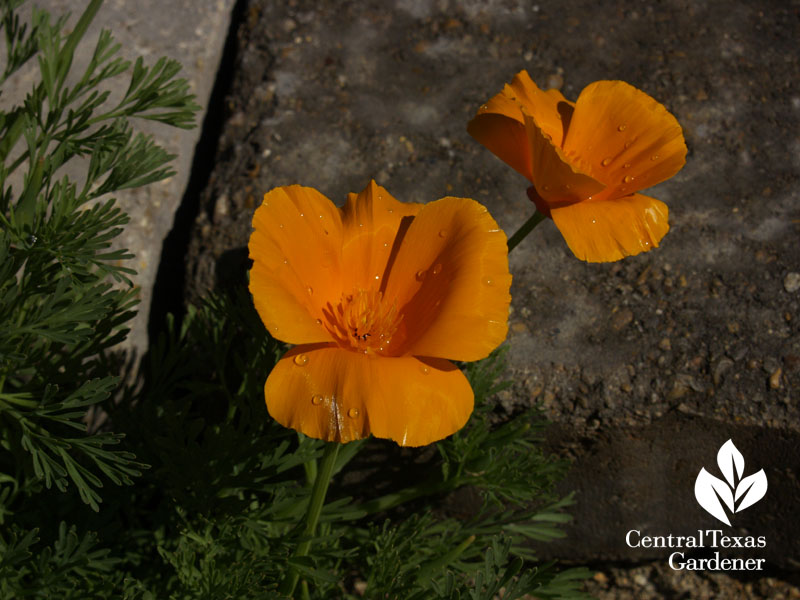
Corn poppies aren’t native, but what beauties against native spring-flowering perennials like columbine.
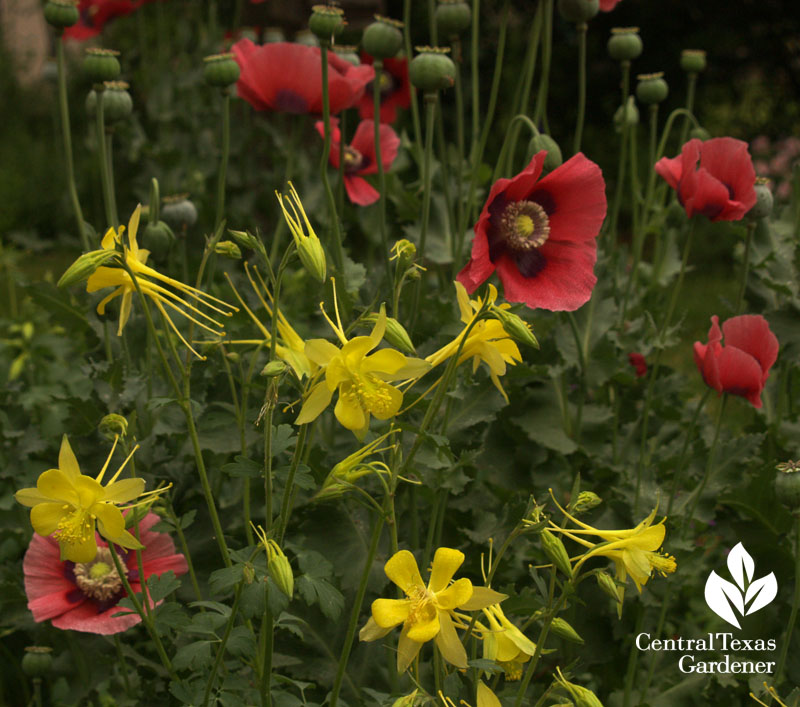
And with irises, like this spuria.
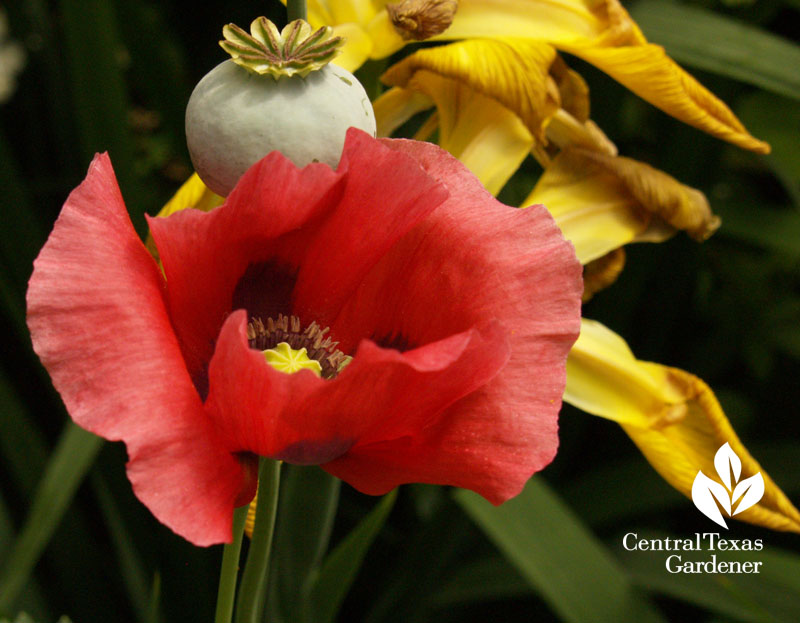
They’re big favorites with bees, too!
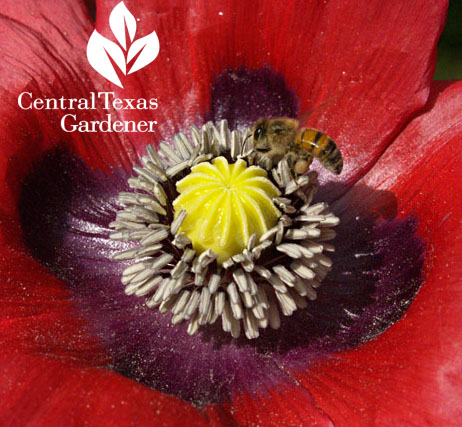
But poppy seeds can be persnickety. This week, Daphne’s got the tips for success.
She answers another top question: why don’t my wildflower seeds germinate?
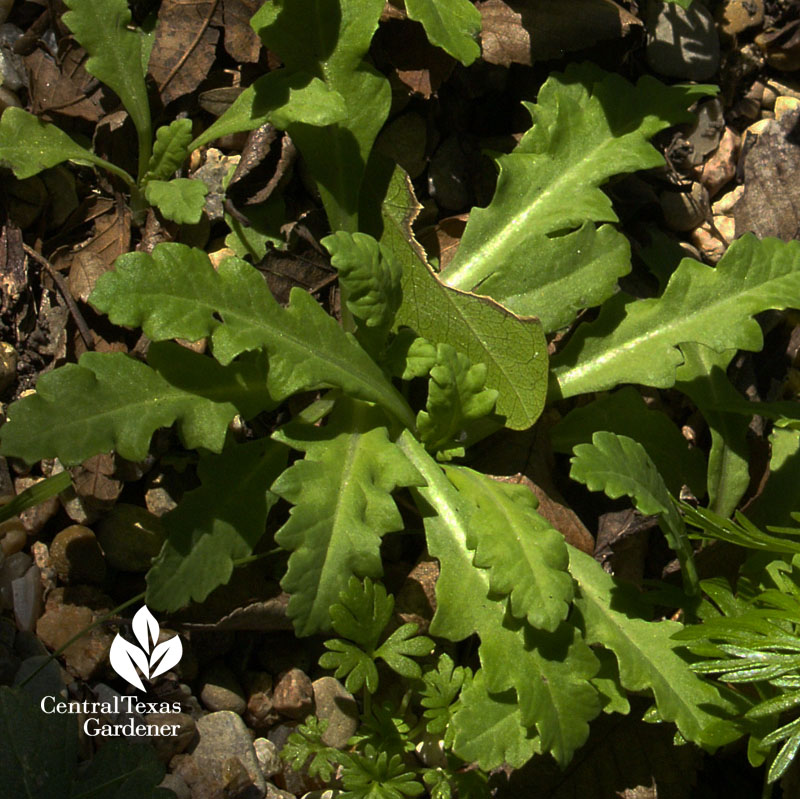
It’s also time to plant cover crops, like Crimson clover, elbon rye and Hairy vetch.
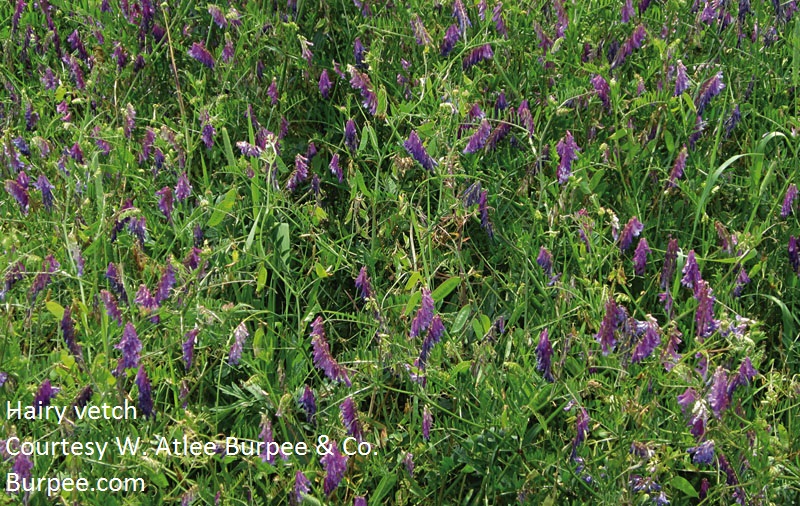
Trisha explains how they naturally fertilize the soil, prevent weeds in fallow beds, and even control root knot nematodes. Here’s her list and how to do it.
Now’s the best time to plant perennials, too. Jean McWeeney from Dig, Grow, Compost, Blog sent us our Viewer Picture of the Week from her Louisiana garden. Hummingbirds hone into salvias, like her Salvia guaranitica ‘Black and Blue’.
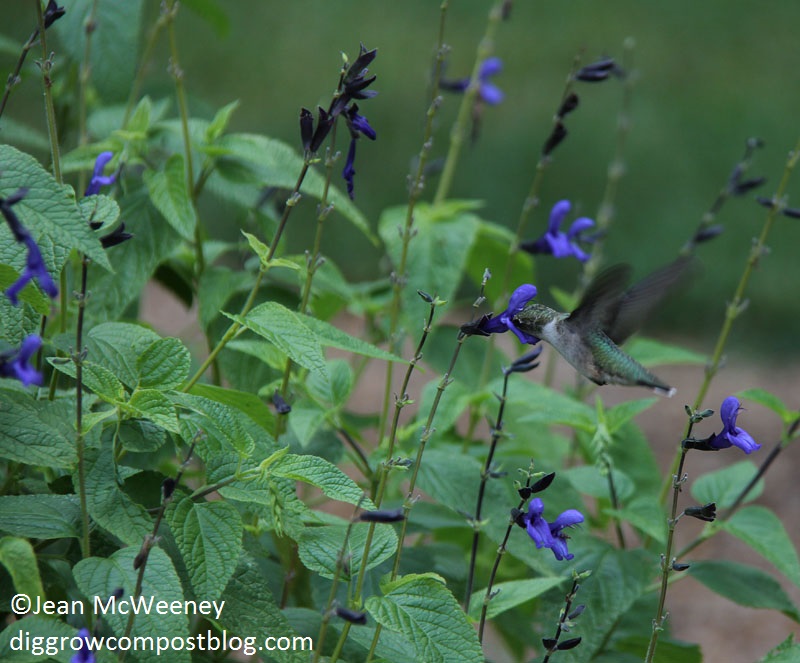
Coming up next: planting bulbs! Usually, I plant additions Thanksgiving weekend, though any time in November is good. You’ll want to get them now. No need to refrigerate, but they can sell out fast! My Byzantine gladioli return every year to join larkspurs.
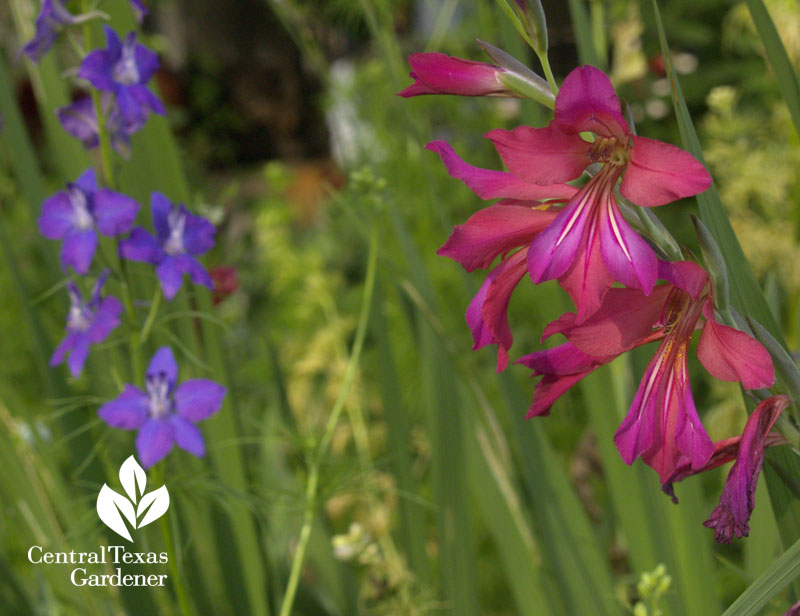
This week, Tom meets with one of the bulb masters himself, Brent Heath, from Brent & Becky’s Bulbs.
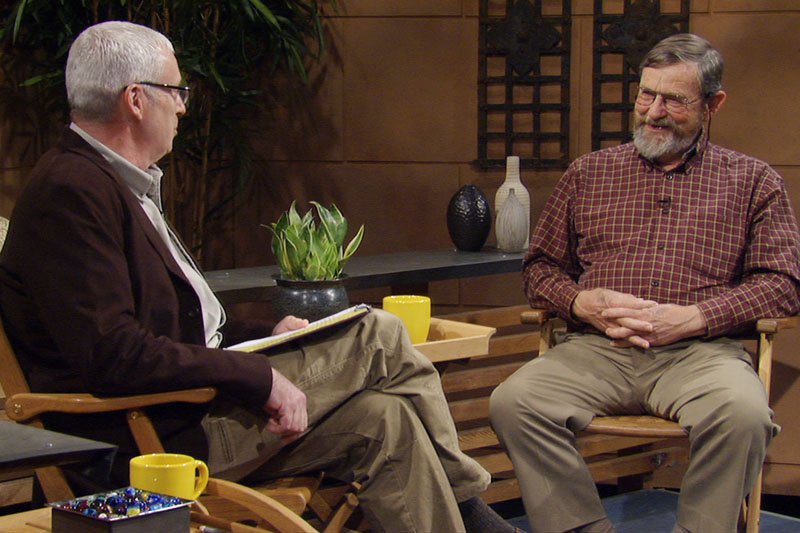
Charm alert! Brent captivates us with stories about how he got started with bulbs in Virginia, joined by equally charming wife Becky.
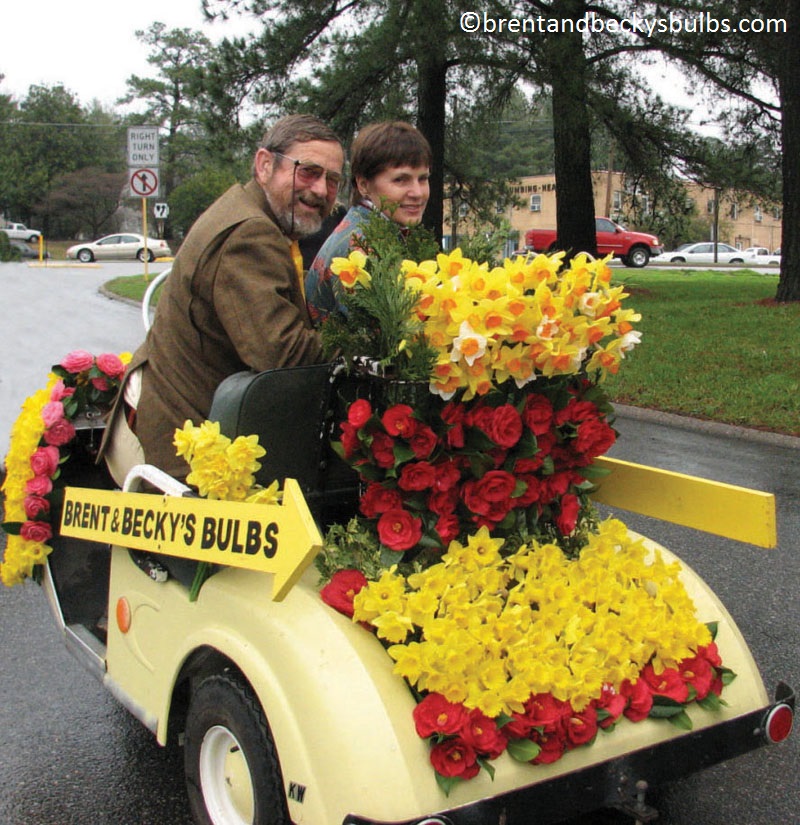
Now their kids join the ultimate Mom & Pop business, with passion and dedication to beautify our lives with seasonal surprises.
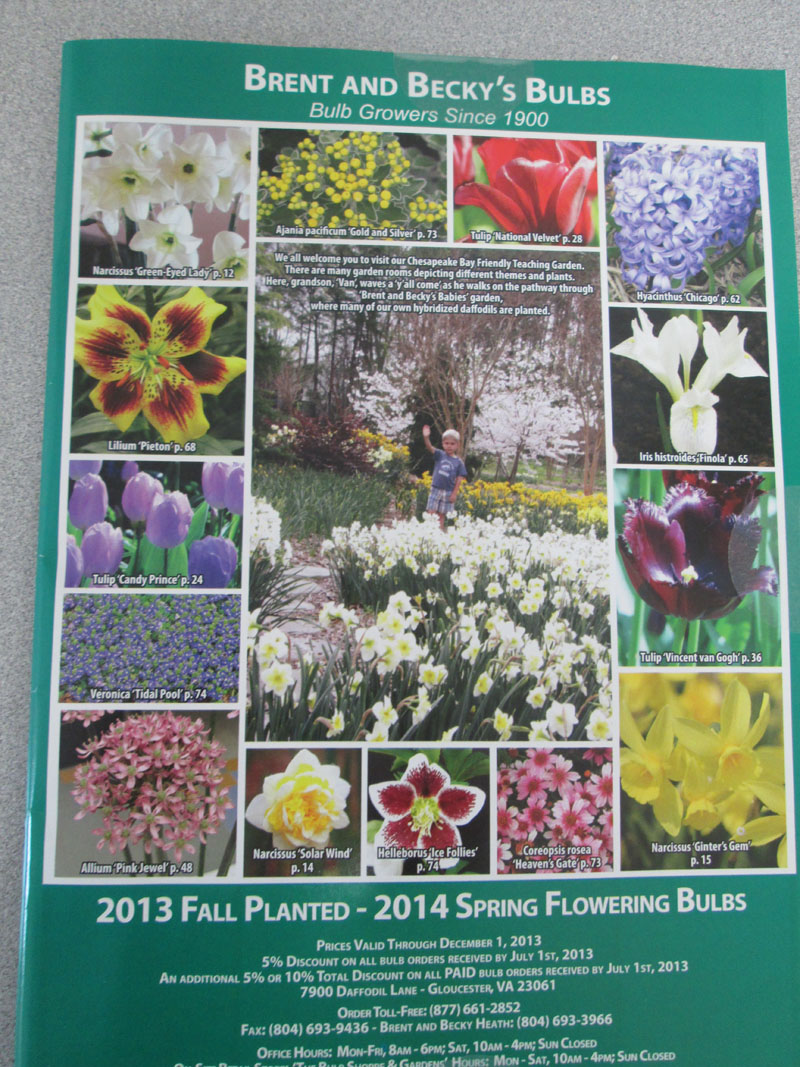
Like me, do you refer to comebacks as naturalizing bulbs? Well, Brent sets us straight! Actually, many of them that return perennialize. Naturalizing refers to those that propagate by seed, too. An example: Rain lilies, like Habranthus robustus, that scatter seeds and also return from the original bulbs.
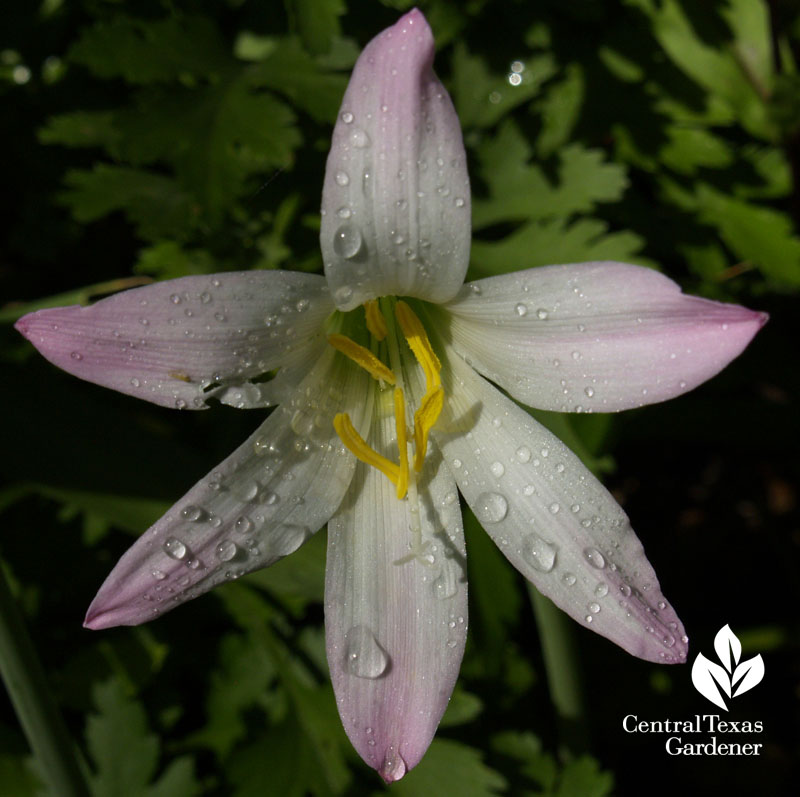
Jonquils (Narcissus jonquilla) can naturalize, like N. ‘Sweetness,’ that even rebounded after our Austin snow a few years back. Brent tells us that grasshoppers avoid jonquils! Deer usually avoid bulbs, too.
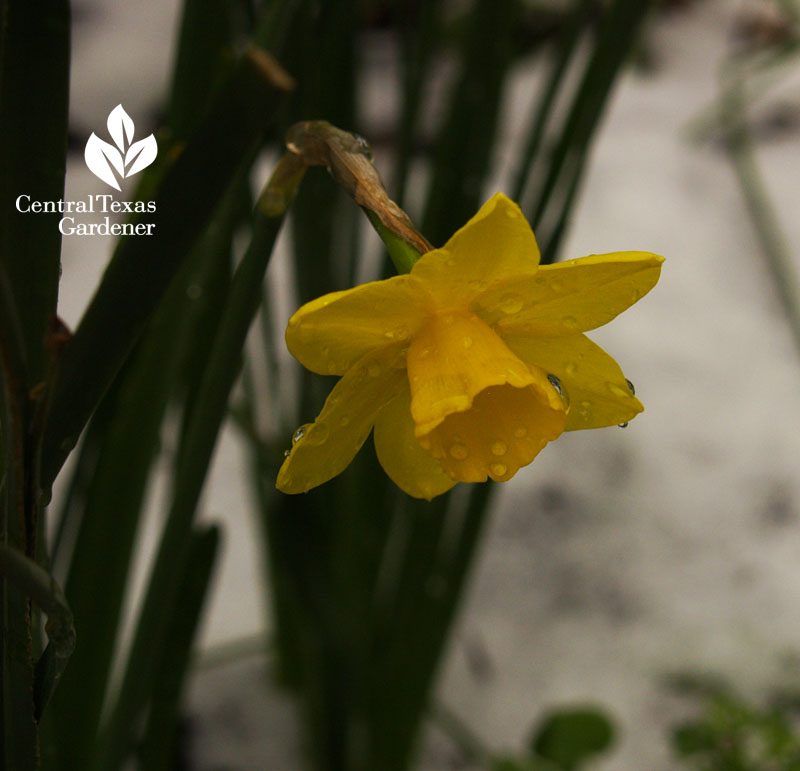
In our heat and humidity, some favorites that Northern gardeners try to grow here are one-shot-wonders. Brent shows off some reliable bulbs that happily hang out with us for generations, like Narcissus ‘Avalanche’, if not drowned in sprinkler systems.
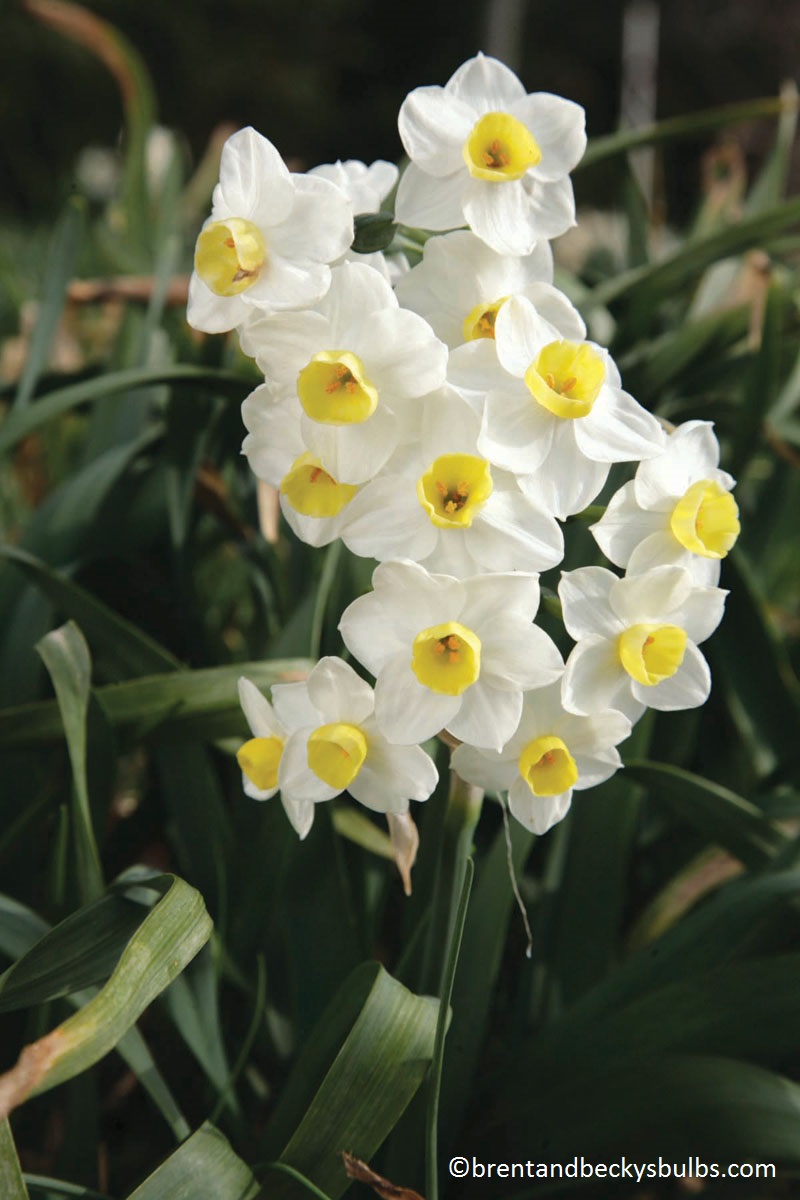
Fall is the season for Lycoris radiata, this one with white plumbago in my garden. In drought years, they may take a break, but will return in subsequent years.
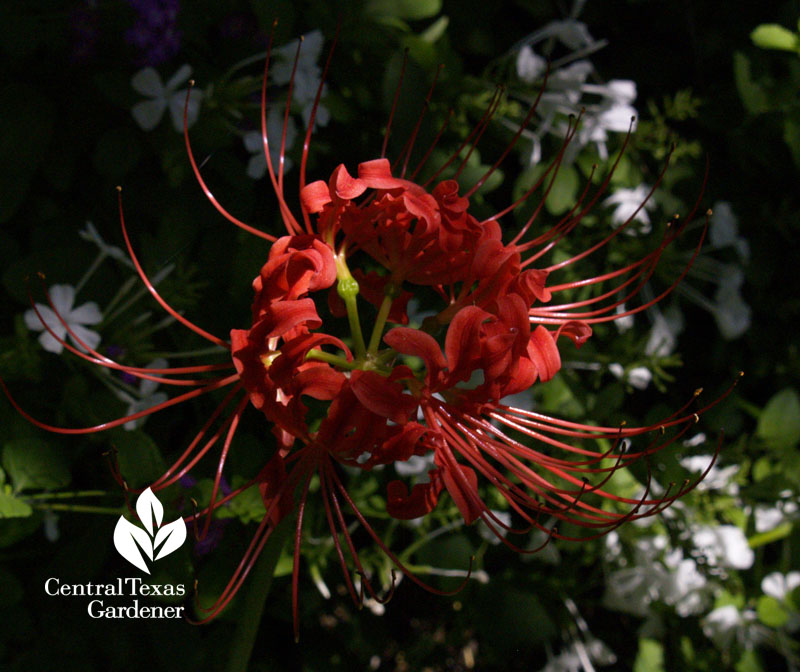
Ditto for oxblood lily.
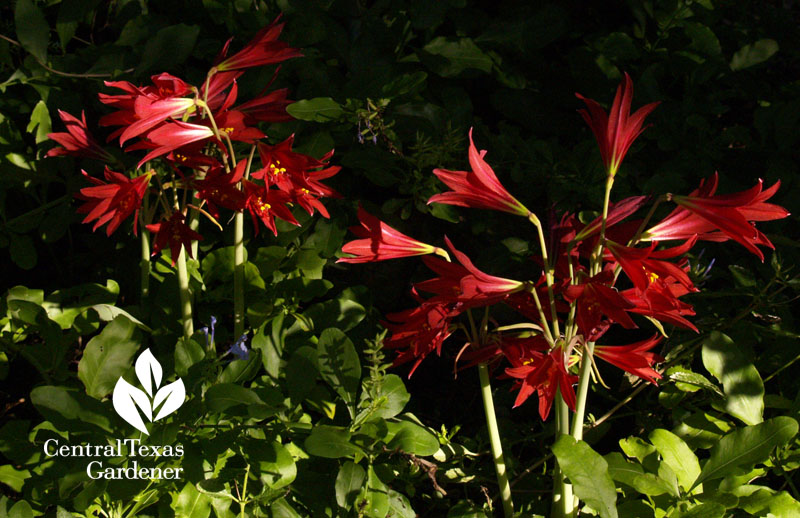
New for me in fall 2012 was Sternbergia lutea. Since they made it back this year, I’m adding more. Diminutive like crocus, I can still spot them from yards away.
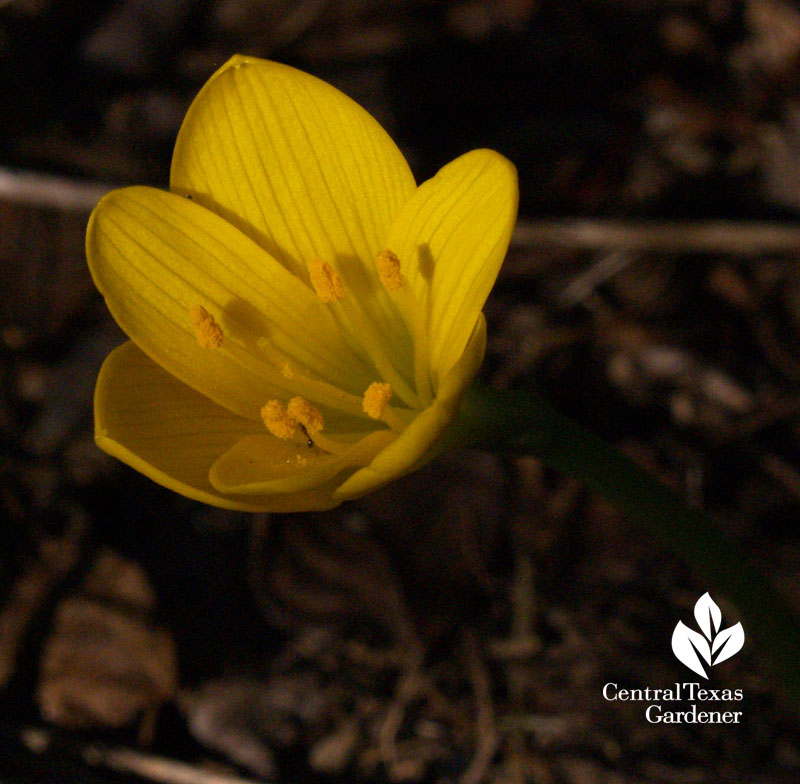
Spring star flower (Ipheion uniflorum) is a tiny mid-spring bloomer that grows in part shade.
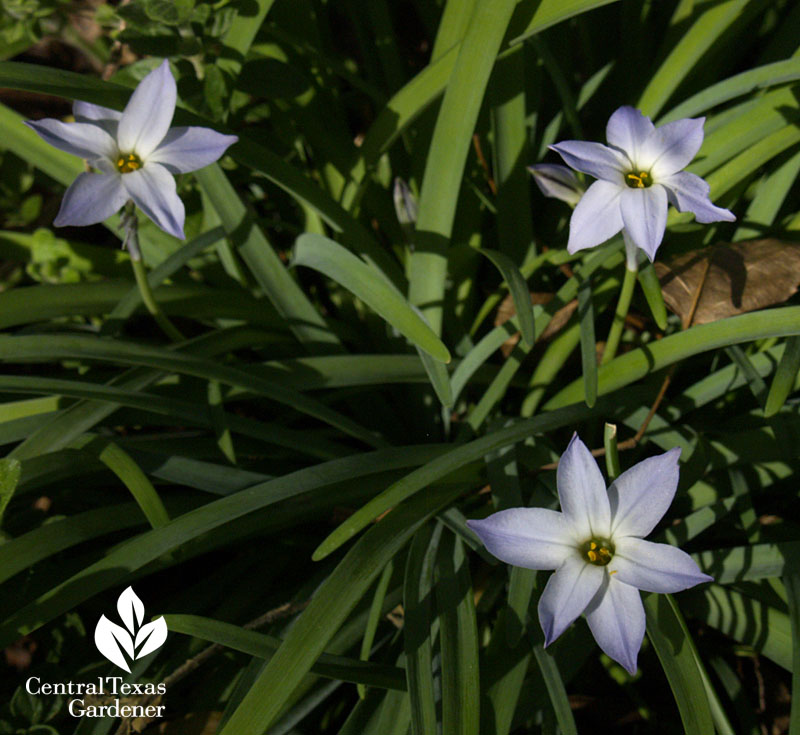
One of my early birds every late winter is beloved Narcissus ‘Erlicheer.’
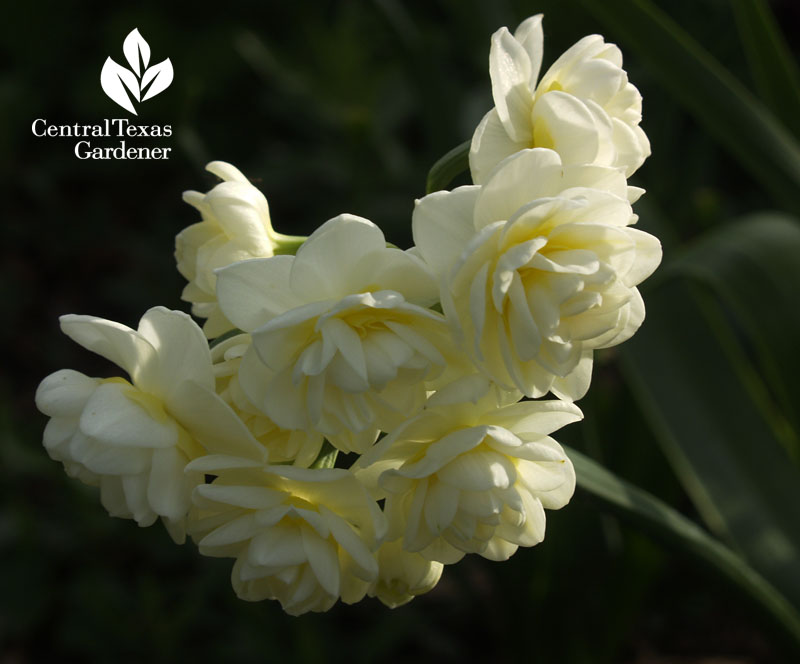
I adore my Arum italicums that I ordered from Brent & Becky’s a few years ago. It’ll be fun to see mine pop out again in the next few weeks.
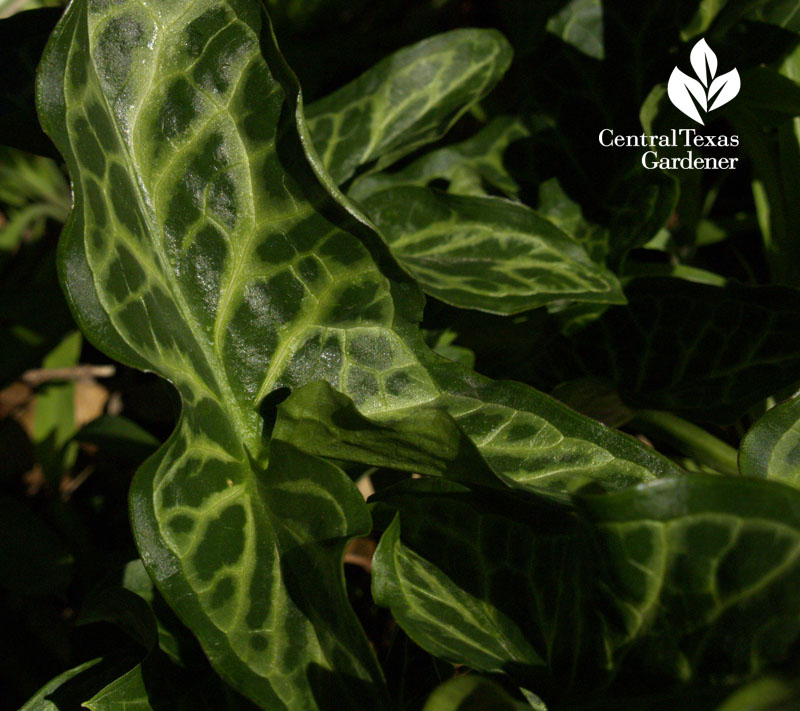
Mine have never bloomed, but that’s not their real drama. It’s all about standout foliage in semi-shade, here joined by purple oxalis, columbine and others.
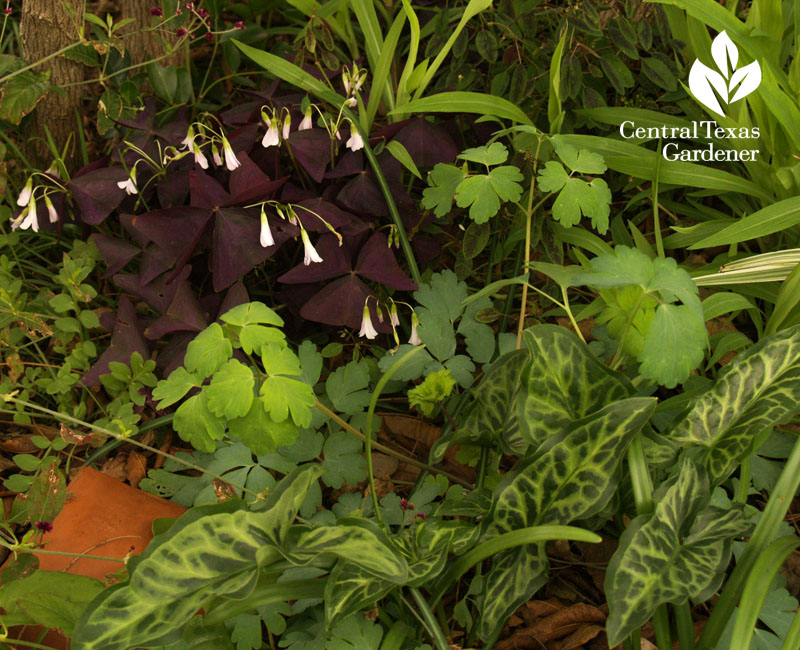
For summertime, Brent recommends crinum lilies. Angela Dobes Carver and I do, too! We thank her for contributing this Crinum americanum and its little visitor.
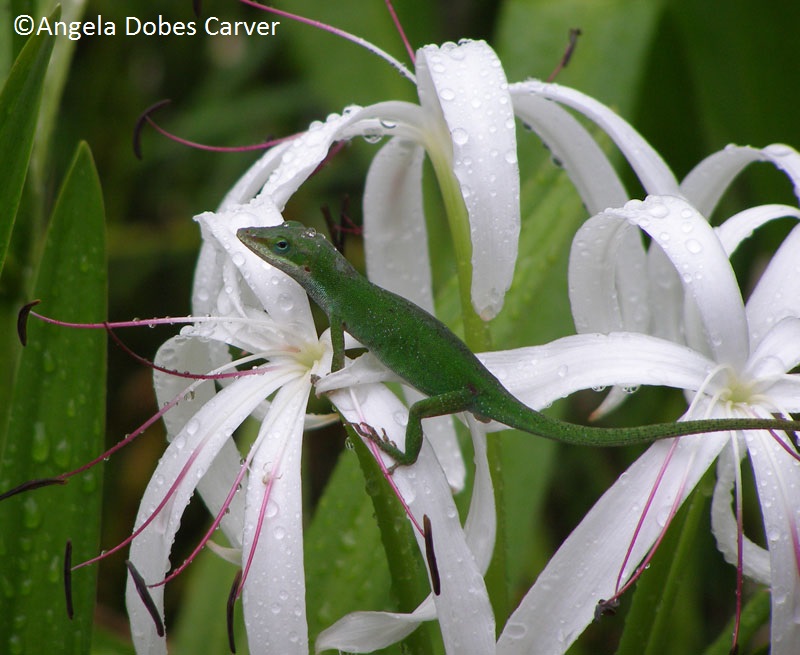
I credit designer Patrick Kirwin for turning me on to Ipheions. On tour this week, he gets credit for turning around an old garden for writers Helen Thompson and Charles Lohrmann to solve flooding issues, hugs of shrubs and lack of privacy.

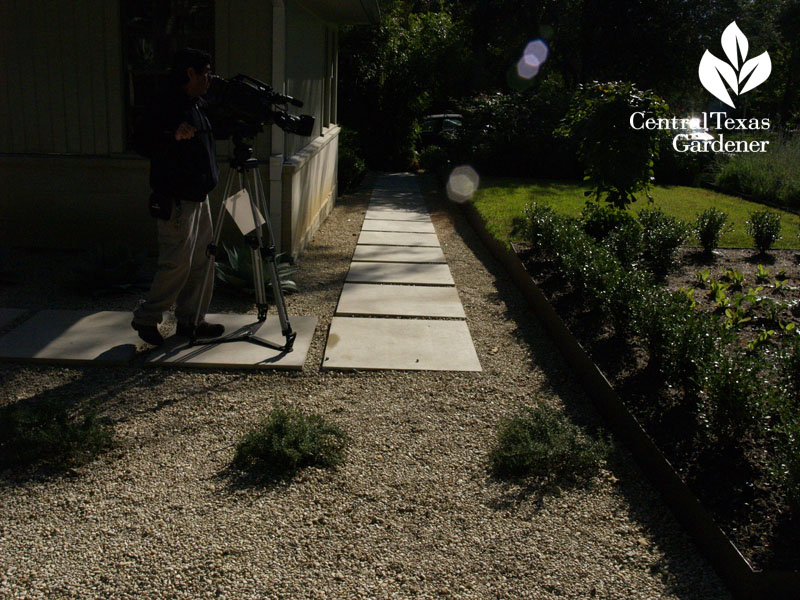
Helen’s an acclaimed writer and book author, currently writer and editor for Interiors Texas magazine. Her knowledge of architectural and interior design came in handy to renovate this old house.
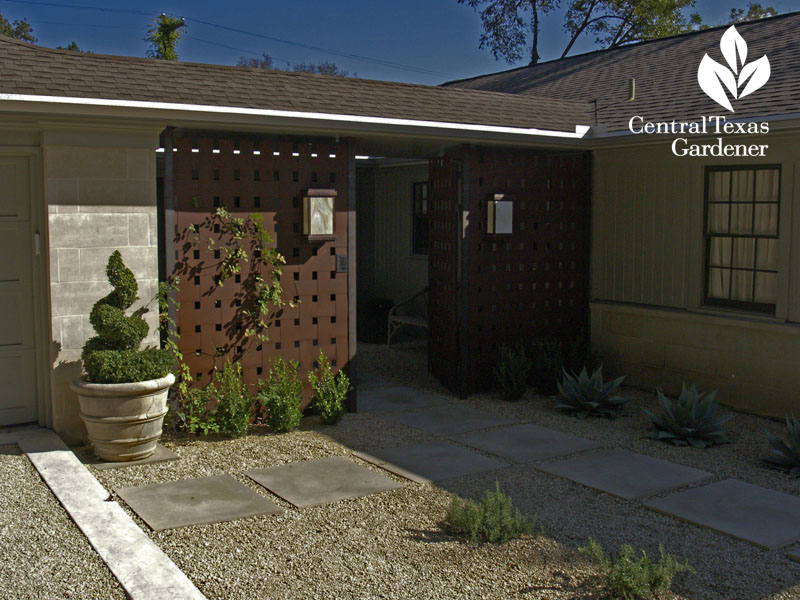
Charles, editor and publisher of Texas Highways magazine, wanted a vegetable garden, too. Sited in front where the sun hits, it’s become a sharing garden with all the neighbors.
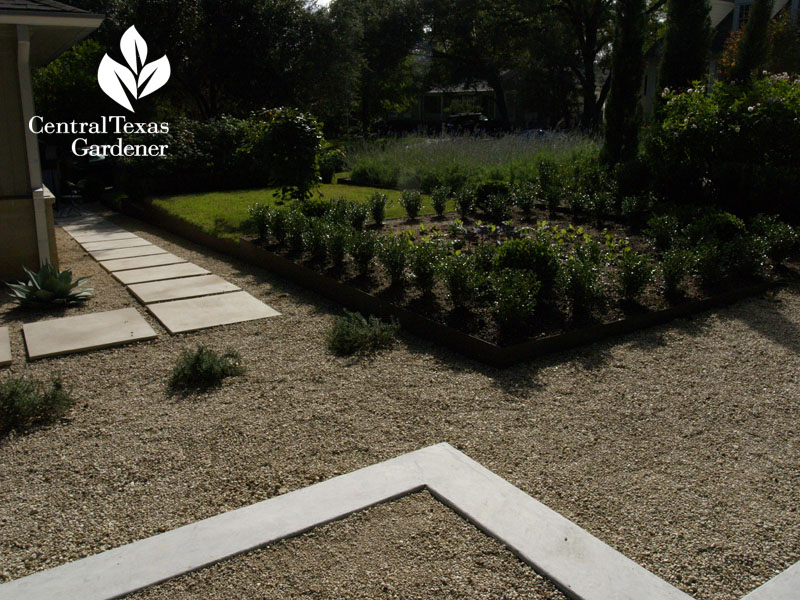
Their rescued cat Cosmo says, “Watch it now to get the whole story!”
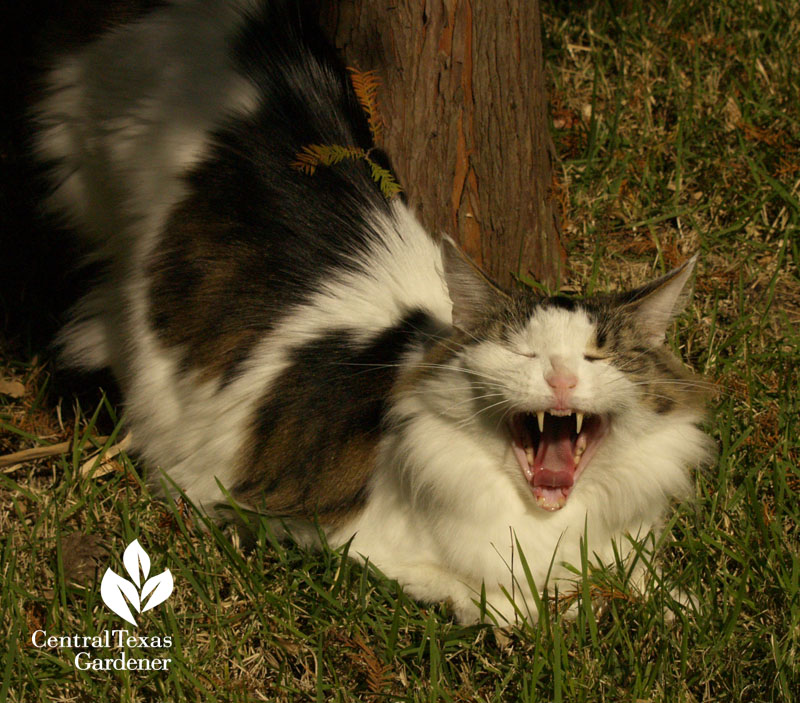
Thanks for stopping by! Linda
tags:

